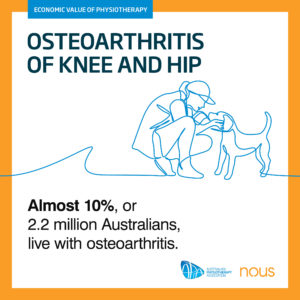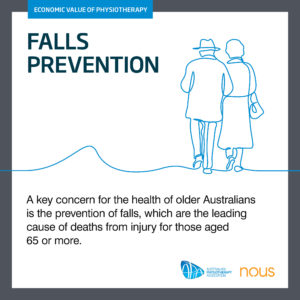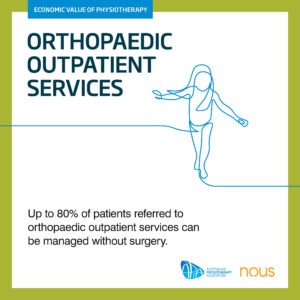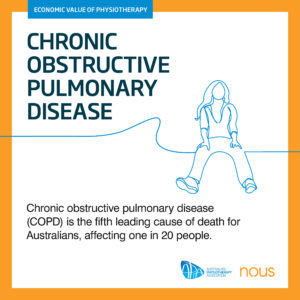Integrative Programs for Chronic Disease Management
Crows Nest Clinical Exercise and Physiotherapy provides Exercise Prescription for the management, rehabilitation and prevention of chronic disease and complex conditions.
The Australian Institute of Health and Welfare states (80%) older Australians (aged 65 and over) have at least one selected chronic health condition – and 28% had 3 or more.
http://www.australian.physio/economic-value
Why maintaining muscle mass is important for your health:
Skeletal muscle makes up 40% of the whole body and skeletal muscle is responsible for optimizing metabolic function.
The continuous maintenance of the musculoskeletal system, via physical activity and use of the musculoskeletal system can improve life significantly both in health and disease.
The latest scientific studies are identifying further evidence to support the importance of maintaining muscle strength for health.
“There is a well-established association between participation in regular physical activity and reductions in all-cause, cardiovascular disease (CVD), diabetes, and cancer-related mortality (1, 2). In the last decade, strength-promoting exercise (SPE) has become an integral component of physical activity guidelines around the world (3, 4), with the World Health Organization recommending at least 2 sessions per week.”
Stamatakis E, Lee IM, Bennie J, et al. Does Strength-Promoting Exercise Confer Unique Health Benefits? A Pooled Analysis of Data on 11 Population Cohorts With All-Cause, Cancer, and Cardiovascular Mortality Endpoints. Am J Epidemiol 2018; 187: 1102-1112.
- Nocon M, Hiemann T, Müller-Riemenschneider F, et al. Association of physical activity with all-cause and cardiovascular mortality: a systematic review and meta- analysis. Eur J Cardiovasc Prev Rehabil. 2008;15(3): 239–246.
- Li T, Wei S, Shi Y, et al. The dose-response effect of physical activity on cancer mortality: findings from 71 prospective cohort studies. Br J Sports Med. 2016;50(6):339–345.
- Garber CE, Blissmer B, Deschenes MR, et al. American College of Sports Medicine position stand. Quantity and quality of exercise for developing and maintaining cardiorespiratory, musculoskeletal, and neuromotor fitness in apparently healthy adults: guidance for prescribing exercise. Med Sci Sports Exerc. 2011;43(7):1334–1359.
- World Health Organization. Global Recommendations on Physical Activity for Health. Geneva, Switzerland: World Health Organization; 2010.
Clinical Exercise Physiotherapy & Exercise Physiology Programs are available for conditions such as:
Musculoskeletal / Orthopaedic Problems:
Osteoporosis, Arthritis, Shoulder, Knee, Back Pain
http://www.australian.physio/economic-value
Osteoporosis: Strong Bone Program
Strength Training (Weight Training) Programs to Manage or Prevent Osteoporosis / Osteopenia:
- Increase Bone Mass Density (bone loading exercise)
- Increase Muscle Strength
- Improve Balance and Prevent Falls
Maintain Mobility and Indepence:
Falls Prevention – Balance Training, Strength Training, Mobility Training.
Balance Training is important to prevent falls. Balance can be compromised due to multi-factorial health issues such as:
- Poor vision
- Weak muscles
- Poor coordination
- Poor sensation, especially on the feet (peripheral neuropathy)
- Impaired proprioception (awareness of body posture)
- Medications, particularly those that are sedating or lower blood pressure.
http://www.australian.physio/economic-value
http://www.australian.physio/economic-value
Complex Neurodegenerative Disorders:
Parkinson’s Disease
http://www.australian.physio/economic-value
Manage Weight:
Maintain muscle mass and bone mass density through the ageing process.
Improve Metabolic Parameters:
Type 2 Diabetes, Insulin Resistance, Obesity, Hypercholesterolemia, Hyperlipidemia, Metabolic Syndrome
For further information this paper this provides an interesting overview:
“Regular exercise is a formidable regulator of insulin sensitivity and overall systemic metabolism through both acute events driven by each exercise bout and through chronic adaptations. As a result, regular exercise significantly reduces the risks for chronic metabolic disease states, including type 2 diabetes and non-alcoholic fatty liver disease.”
Exercise and metabolic health: beyond skeletal muscle, J.P. Thyfault & A. Bergouignan, Diabetologia. 2020 August ; 63(8): 1464–1474. doi:10.1007/s00125-020-05177-6.
https://pubmed.ncbi.nlm.nih.gov/32529412/
Improve Cardiovascular Function:
Hypertension, Heart Disease
Improve Respiratory Function:
Chronic Obstructive Pulmonary Disease (COPD)
http://www.australian.physio/economic-value
“World Physiotherapy works with and through its members to fulfil its mission of moving the physiotherapy profession forward and promoting its contribution to global health.”
Jonathon Kruger, World Physiotherapy chief executive officer
World Physiotherapy
To find the national physiotherapy association in your country/territory visit
https://world.physio/our-members
The burden of musculoskeletal conditions in Australia: a detailed analysis of the Australian Burden of Disease Study 2011
MOVE WELL, STAY WELL.









